Alumni in Print
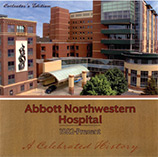 Abbott Northwestern Hospital: A Celebrated History
Abbott Northwestern Hospital: A Celebrated History
Robert Scott’61
Abbott Northwestern, Hospital Foundation, 2016
In 1877, Dr. Amos Abbott (an 1869 P&S graduate) rented a small house in Minneapolis to treat his patients. By 1902, his practice moved to larger accommodations, known as Abbott Hospital. Meanwhile, in 1882, Minneapolis community leader Harriet G. Walker gathered 44 women and rented a house they called Northwestern Hospital for Women and Children. In 1970, the two hospitals merged to become Abbott Northwestern Hospital. Dr. Scott, a former member of the Abbott Northwestern Hospital medical staff, brings in this new book the fascinating history of the two great institutions that had been delivering health care in Minneapolis for more than a century.
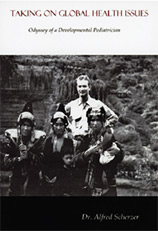 Taking On Global Health Issues/Odyssey of a Developmental Pediatrician
Taking On Global Health Issues/Odyssey of a Developmental Pediatrician
Alfred Scherzer’63
Ra Press, 2016
Dr. Scherzer shares in this book his story of failure and success. Frustrated at failure to gain acceptance to medical school following college, Dr. Scherzer went on a 10-year hiatus in Southeast Asia and the South Pacific. This experience turned out to be a blessing in disguise and led him to a unique medical career in developmental pediatrics, long before this field had a recognized professional status. Dr. Scherzer’s story illustrates a strong positive reaction to perceived failure and how time, persistence, and luck combined to enable him to fulfill his childhood dream of becoming a physician.
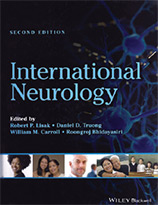 International Neurology, 2nd Edition
International Neurology, 2nd Edition
Robert P. Lisak’65
Wiley-Blackwell, 2016
This unique textbook by a team of editors led by Dr. Lisak deals with the variations in the causes, presentations, and treatment of neurological disease throughout human populations by presenting international authorship that distills expert knowledge from around the world, including developing nations. Consisting of 22 sections and 173 chapters with contributions from worldwide experts, it serves as an invaluable guide for physicians to expand their knowledge of different neurological disorders in different countries. This is the first book to take a global approach to neurological illness, and it has been endorsed by the World Federation of Neurology.
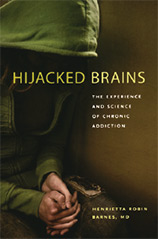 Hijacked Brains: The Experience and Science of Chronic Addiction
Hijacked Brains: The Experience and Science of Chronic Addiction
Henrietta Robin Barnes’78
Dartmouth College Press, 2015
By interweaving personal narratives with fascinating recent studies in brain science, Dr. Barnes shows how addictive drugs overtake basic brain functions and transform them to create a chronic illness that is very difficult to treat. The book explores how the healthy brain works, what it feels like to be crippled by addiction, and how American culture tends to blame the addict for bad choices and personal weakness. One reviewer praised Dr. Barnes for “capturing the complexity and anguish of the chronic illness of addiction with clarity and compassion. She writes about complex issues with the clarity that comes from deep thought and rich experience.”
 Diseases and Disorders of the Orbit and Ocular Adnexa
Diseases and Disorders of the Orbit and Ocular Adnexa
Aaron Fay’93, Co-Editor
Elsevier, 2017
Written by an international team of more than 70 contributing experts from five continents and co-edited by Dr. Fay, this new textbook offers in one convenient volume an in-depth and thorough approach to diagnosing and managing orbital and ocular adnexal diseases by incorporating the perspectives of numerous specialties. The book covers the clinical presentation, pathophysiology, natural history, and management alternatives of disease processes affecting the orbit, eyelids, lacrimal system, and upper face. The book uses an easy-to-follow template format throughout for quick and easy navigation and features more than 1,200 high-quality clinical images, histological illustrations, and imaging photos that provide clear visual examples of orbital disease.
 The Pharmagellan Guide to Biotech Forecasting & Valuation
The Pharmagellan Guide to Biotech Forecasting & Valuation
Frank S. David’96 MD/PhD
Pharmagellan, 2017
Dr. David’s new book is a comprehensive reference handbook to creating and interpreting financial models for early-stage biopharma assets and companies. The book is intended to help anyone—biotech executive, investor, deal maker, entrepreneur, adviser, or others who aspire to be involved in the biotech industry—who needs to know how to build and analyze forecasts and valuation models of R&D-stage drugs, which they can then use to make investment decisions, pitch to potential partners or funders, or assess their own R&D programs. One of the book’s co-authors, Seth Robey, recently received his PhD degree in pharmacology from Columbia.
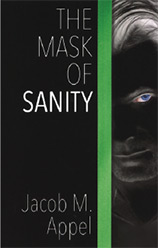 The Mask of Sanity
The Mask of Sanity
Jacob M. Appel’09
The Permanent Press, 2017
In his new dark and unsettling novel, Dr. Appel delves into the mind of Dr. Jeremy Balint. On the outside, Dr. Balint is a pillar of the community; he is the youngest divisional chief at his hospital, a model son to his elderly parents, and fiercely devoted to his wife and two daughters. On the inside, he is a high functioning sociopath who reveals the depth of his cold-blooded depravity. One editorial review said, “Appel’s characters have plenty of secrets to keep; Dr. Balint is not a man trying to overcome his demons, but one who is fully in league with them, and that keeps ‘The Mask of Sanity’ moving.”
- Log in to post comments

